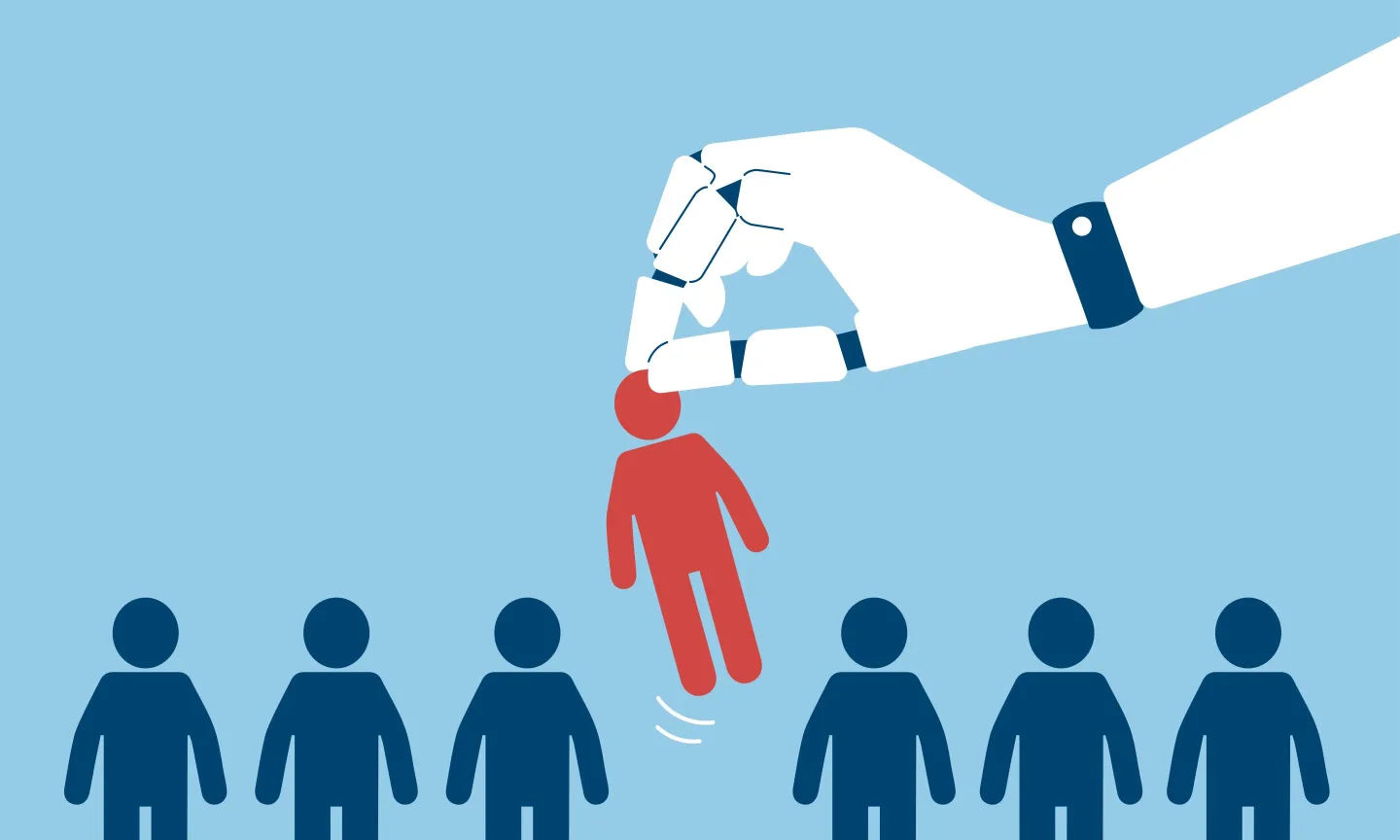
Knowing When Humans Should Step Back: The AI-Human Balance in Hiring
79% of employers use AI in hiring, but fairness still depends on how we design and monitor these tools. Here's how to strike the right balance between efficiency and empathy—and where human insight still holds the edge.
A recent Fortune article raised an important question that's become central to hiring in 2025: What if the next big difference-maker isn't just AI doing more—but knowing when humans should step back in?
The data is clear: 79% of employers already use AI in recruitment and hiring. Algorithms can drive efficiency and consistency. But as Gary D. Friedman notes in his Fortune piece, fairness still depends on how we design and monitor these tools—and human judgment remains a crucial part of the equation.
The Amazon Lesson: Algorithms Mirror Our Biases
The article highlights a cautionary tale that every hiring team should know: in 2018, Amazon abandoned an AI hiring practice when it discovered the tool had actually perpetuated bias. The problem wasn't the AI itself—it was the data. Most resumes in the training data belonged to men, reflecting the tech sector's demographics at the time. Naturally, the AI learned that men were preferable candidates, and began scoring resumes from "women's" colleges or chess teams lower.
This isn't an isolated problem. As the Fortune piece notes, algorithms are only as unbiased as the data and guardrails we build around them. Without careful design, AI can amplify existing disparities rather than reduce them.
Where AI Excels: Consistency and Scale
The research shows AI can deliver real value when designed thoughtfully. A study at Columbia Business School found that candidates selected by machine-learning algorithms were 14% more likely to pass interviews and receive offers, and 18% more likely to accept those offers—when the algorithms were trained on variables that improve predictive accuracy.
AI's strength lies in consistency: it won't deviate from pre-selected criteria to rationalize a biased decision after the fact. Unlike human evaluators who may justify choosing men without degrees over women with degrees one day, then reverse the criteria the next (as a Yale study demonstrated), algorithms stick to the rules we set.
Where Human Insight Still Holds the Edge
But there are areas where human judgment remains irreplaceable:
- Context and nuance: Understanding when exceptional circumstances matter more than rigid criteria
- Empathy and rapport: Building trust with candidates and recognizing when someone is nervous versus disengaged
- Cultural fit assessment: Reading between the lines of how someone communicates and collaborates
- Long-term potential: Seeing beyond immediate qualifications to recognize growth trajectory and adaptability
- Ethical decision-making: Knowing when to question the algorithm's output and override when something feels off
Balancing Automation with Human Oversight: Evalora's Approach
At Evalora, we've been researching how this mix of tech and human insight plays out in recruiting. One approach we're exploring: using voice-based automated screening to give every candidate the chance to express motivation and presence upfront—so hiring teams don't just see a resume, but also gather richer signals early.
The key is transparency and control:
- Candidates know they're speaking with AI (disclosure and consent)
- Structured scoring tied to role requirements (not arbitrary traits)
- Human-in-the-loop controls for final decisions (humans review and can override)
- Clear reports on what was measured and why (explainability)
- Bias monitoring and regular audits of outcomes
Practical Guardrails for Fair AI Hiring
The Fortune article notes that some companies, like the Data & Trust Alliance, have developed "Algorithmic Bias Safeguards for Workforce" to detect, mitigate, and monitor bias. States like Maryland and Illinois are also enacting regulations—Illinois requires employers to notify applicants when AI will be used and obtain consent.
For hiring teams, here are practical steps to ensure fairness:
- Audit your training data: Ensure it represents diverse, successful candidates, not just historical hires
- Monitor outcomes by demographic: Track offer rates, acceptance rates, and retention across groups
- Build in transparency: Candidates should know when AI is being used and what it's measuring
- Maintain human oversight: No decision should be fully automated—always have human review
- Regular calibration: Continuously test and adjust algorithms based on real-world outcomes
The Future: Learning as We Go
As the Fortune article concludes, "Historically, all technologies go through an adaptive phase where we get to know them, recognize their utility, and create methods to guard against their unintended, yet inevitable, deleterious effects."
We're still learning how to balance efficiency with empathy. There won't be a one-size-fits-all approach—each organization needs to find what works for their context, their roles, and their values.
Questions Worth Asking Your Team
- How are we balancing automation with human oversight in hiring today?
- Where do we believe human insight still holds the edge over computed decisions?
- What practices have we implemented to ensure fairness, transparency, and quality in AI-enabled hiring?
- Are we monitoring outcomes or just trusting the algorithm?
- When was the last time we audited our hiring data for bias?
The goal isn't to replace human judgment—it's to augment it with tools that expand our ability to find great candidates fairly and efficiently. As Friedman notes, "Our employment decisions will benefit from the right mix of AI with human intelligence."
We'd love to hear your perspective: How is your team navigating this balance?